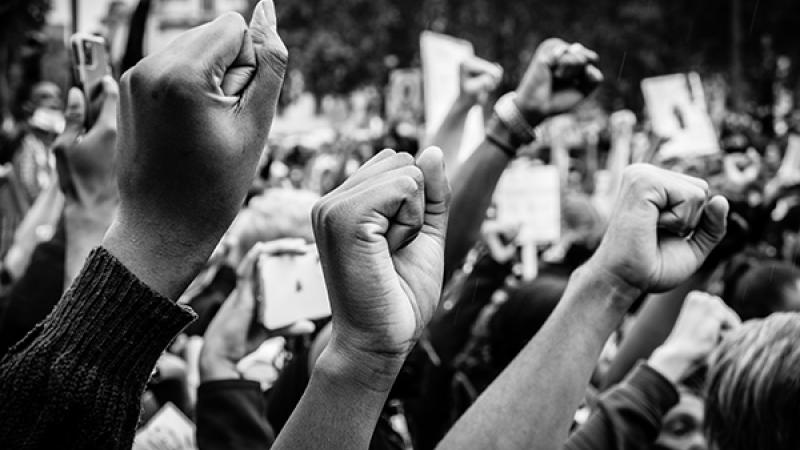Say It Loud: Part II

Photo Credit: Vincenzo Lullo /Shutterstock.com
Life, as we know it in America, has been rocked. We are being challenged to ask ourselves tough, and honest questions like, “When did Black men become a threat to society?” or “Have I contributed to a culture of oppression?” These are difficult questions that we may not want to answer, but this is not the time to look up and say, “Another moment of crisis has hit our country,” then proceed on with business as usual. While the work of our organization must continue—improving the health and lives of people should still be of utmost importance to us—we also must recognize we have come to a watershed moment! Things will never go back to how they were, and we must individually choose which side of the stream we will follow. I cannot tell you what to do, but I can offer some things for you, leaders and staff alike, to ponder upon as you decide what your “after this” response will be.
In the context of our working environment, perhaps we should consider the following:
Set aside time to take an honest look at the composition of our workforce. It is easy to glance at a workforce demographic report or an organizational chart without feeling the weight of what it means. Do you look and say, “We have all people represented in our organization . . . every racial group, every age group, people with disabilities, people of all sexual orientations, we’re doing good,” or do you ask more difficult questions that address whether there is a representation of all people at all grade levels in all occupations in your organization? Do you think about whether or not people who are not from the majority community are given a voice in your organization? What does your inner circle of advisors look like? What does your senior leadership team look like? Are we truly diverse or do we simply look diverse? Moreover, does diversity collide or intertwine with inclusion in your environment? We must reflect upon these questions to ensure we are not simply using diversity and inclusion as buzz words. We should seek to make them action words that we attend to daily.
Set aside time for an honest conversation with individuals who identify as minorities in your workforce. Listen intently. Do not just show up out of obligation. This should not be an exercise of futility because more often than one may realize, members of the minority community come to work dripped in the words of poet Paul Laurence Dunbar. They are wearing the mask that grins and lies, hiding their cheeks and shading their eyes, with torn and bleeding hearts, they smile because they have learned to survive amid the struggle and make it on broken pieces. Yet, while we have learned to survive, our voices and our pain need to be heard. We do not need another person to tell us to get over it and offer guidance on how to get from point A to point B. We do not need individuals to give us a handout, we need our humanity honored and we need our voices to be given space to fill the air. What we say is just as important as what others say, so give us a chance to speak and genuinely listen to what we say.
Make inclusion a priority. Perhaps this is the most important and most challenging response to this moment in time. It is not good enough to give people from a minority group a job if one is not willing to offer a welcoming and open environment. In many regards, I would rather you not offer me the job if I am going to be treated like “the help.” Minority employees need to know that we are not your check to a box. We need to know that you appreciate the intellect, the talent, the experience, and the skills we bring to this organization. If we can only safely build meaningful relationships with people who look like us, you have not welcomed us into your organization, you have not made us feel at home; instead, you have opened the door and told us to figure it out on our own. For some of us, particularly those among us who are first-generation professionals, that is a setup for troubled times!
What shall we do next, as leaders, as employees, and as people who comprise humanity? What will we do and how will we seek to make a difference so all will know that in this space, the hallowed National Institutes of Health, we welcome diversity—diverse talent, diverse lived experiences, diverse languages, diverse skin colors, and diverse thinking? The answer to these questions is up to you.
I believe we can come out of this moment stronger than we entered it and, hopefully, we will come to more fully understand that together, we can accomplish so much more.
Do you have a story idea for us? Do you want to submit a guest blog? If it's about equity, diversity, or inclusion, please submit to edi.stories@nih.gov.
For news, updates, and videos, subscribe or follow EDI on: Twitter, Instagram, Blog, YouTube.


